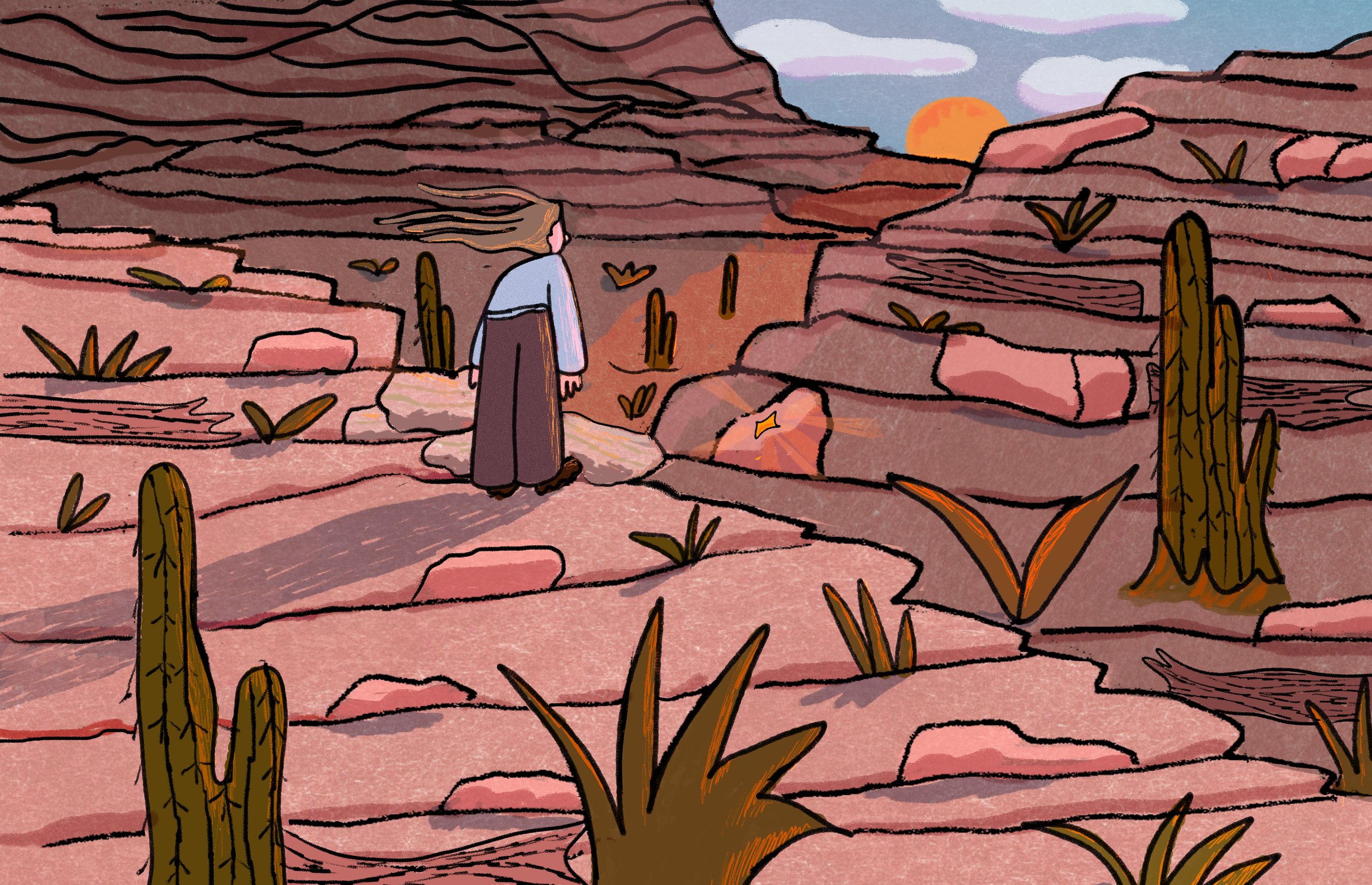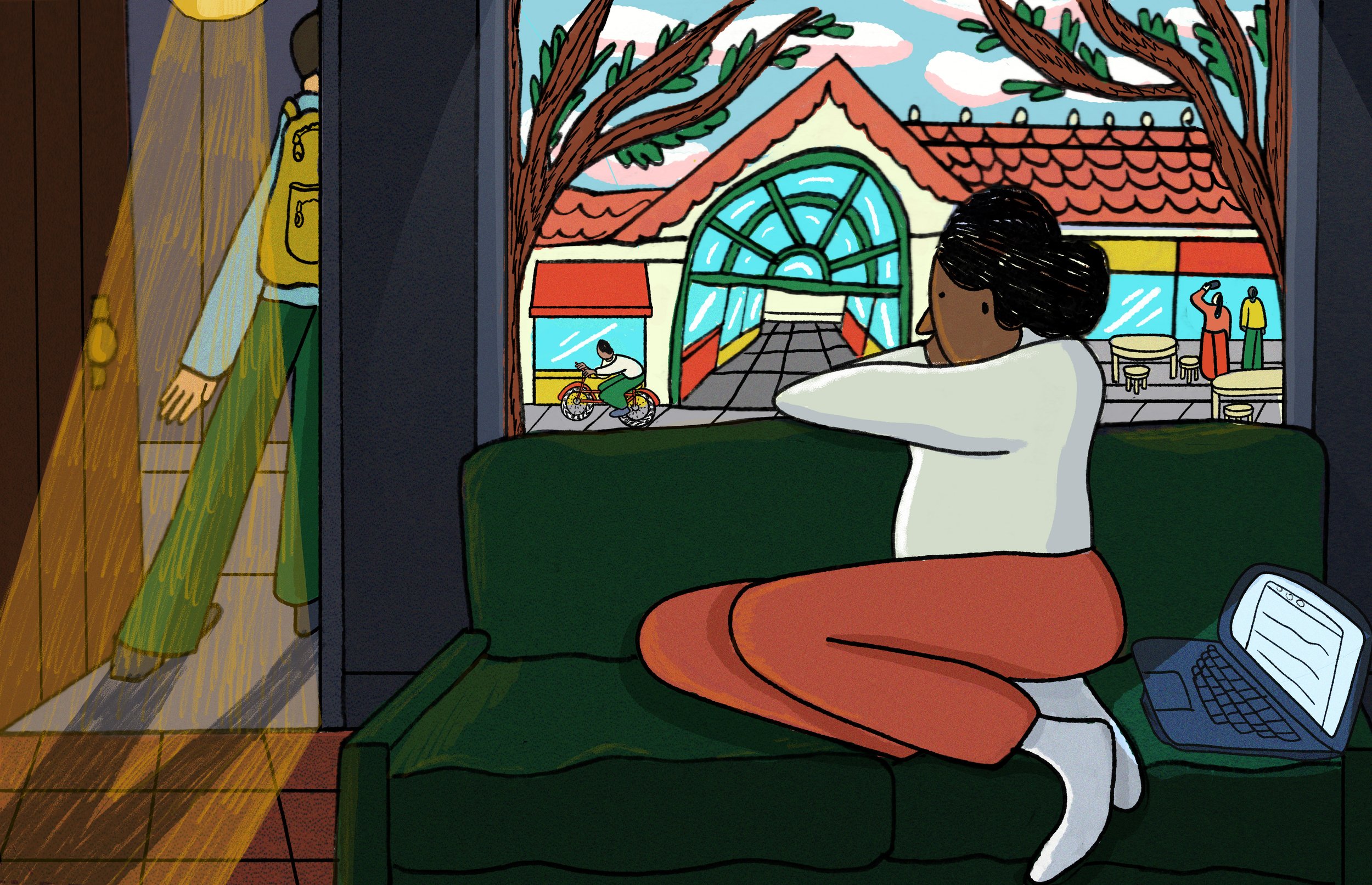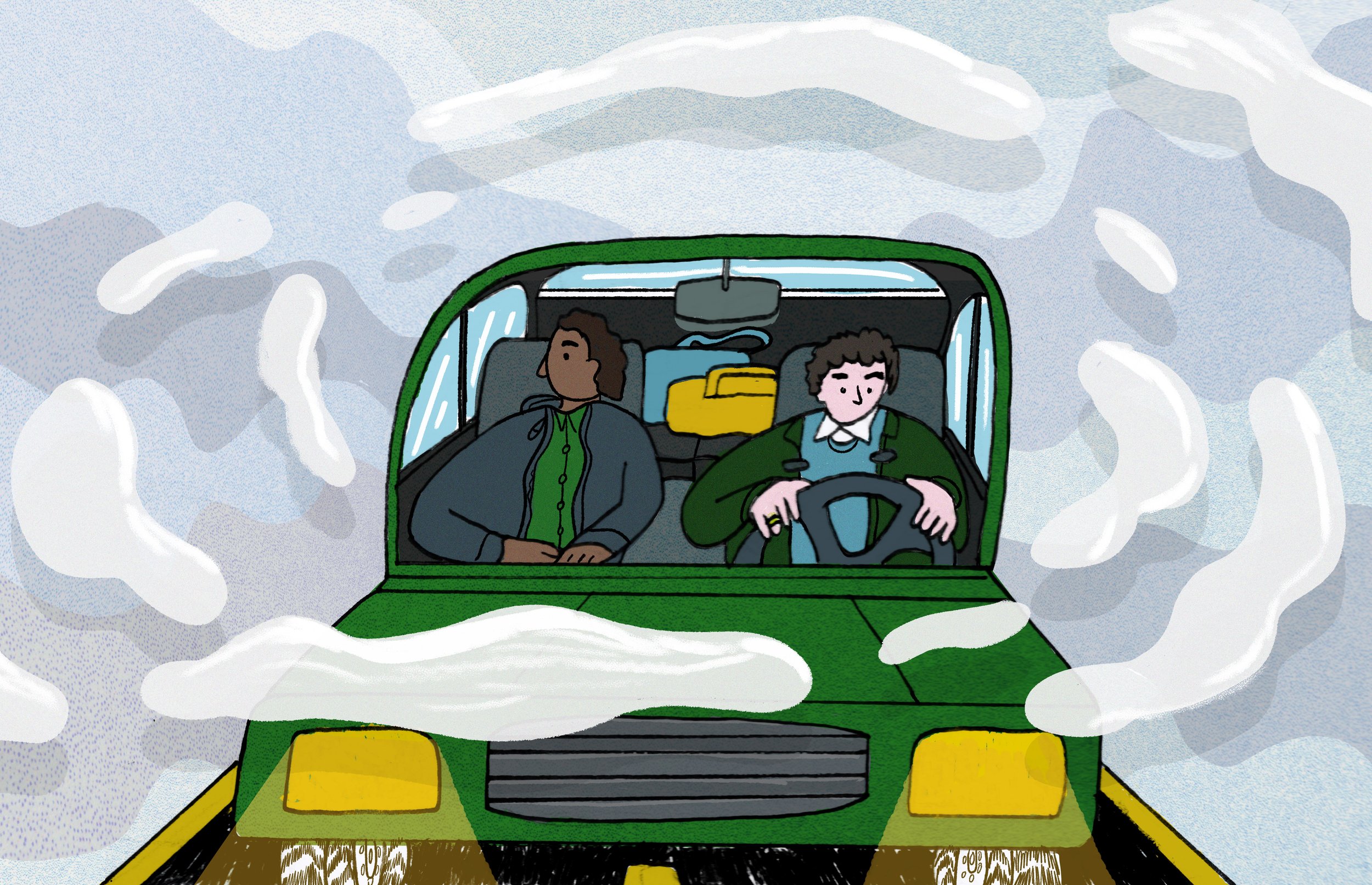6:34 p.m. on Goat Mountain

6:34 p.m. on Goat Mountain is blasts of rough-housing wind, chilled grass sprouting through rock, dying light sliced to rays by nearby ranges.
When I moved from Los Angeles to Landers, an unincorporated town outside Joshua Tree, I spent most of my free time on the mountain. On that first day, I stopped halfway up the trail and looked out at the grid of dirt roads, wondering what I must look like from afar—a wild-haired woman trying to belong to the desert. Ahead of me, the rock face seemed to have been torn apart. Once home to gold miners, mining shafts still pockmark the mountain in places.
I had moved into a friend’s detached desert guest house days ago. After a decade in recovery programs, I had simply replaced drugs with men, and Landers was my departure from the latest. I had been avoiding my friend, embarrassed that I had built a life from which I needed to escape. I’d been alone for days. The isolation was souring my mind. I packed a bag: a single orange to spike the blood sugar, the dregs of a water bottle. I needed so little.
The rocks were difficult to maneuver and after ten minutes of climbing, I was out of breath and very high up. I felt fear coursing through my body: If I fell, who would know? At a clearing, a triangular bulge of granite burst forth with a small indent that looked perfect for sitting. I unloaded my bag and sat in the crevice, my back leaning against the incline. I imagined all that fear moving toward my back and soaking into the rock beneath me. I dozed off for a moment and when I woke up, three flies sat in a row on my arm, watching me.
I walked further to a cluster of boulders on a rocky ledge. The rock was decimated—raw and white with striations of pale green. I envied the mountain its stripes. I wished I, too, could crack myself open, find hard evidence that time had changed me. I wanted to wedge a stick between the cracked shards of my life and burst it apart to see: What happened here? I threw my body across a perfectly flat boulder and watched the landscape gyrate in the wind. My face caught streams of air shooting through the valley. The way it brushed past me felt ecstatic, like physical contact.
Beyond the boulders lay a craggy, bleached pass of mountain detritus, where sharp rock occasionally fell off the steep cliff, reminding me how high I was. You really want to do this? the mountain seemed to ask. I did. I climbed over dead tree trunks, avoided the slim, quick slivers of California snakes, and picked off the cholla that clung to my pants. I was panting by the time I reached The Bowl, until I looked up and my breath abruptly stopped.
The Bowl is a basin toward the top of the trail—a cup-shaped valley that cradles you, in which only the sky and walls of mountain are visible. It was the strangest sensation, as though I’d entered another world. A friend later described it as “cloaked,” and it is like that—you get the feeling you’ve been unknowingly invited to a place that isn’t really there, and then accidentally showed up at the exact right time. The Bowl says almost, keep going.
At the summit, a small labyrinth of charred stones led me around and around. From its center, the views were otherworldly—land potholed and brutalized and golden, as though some god with rough hands had pinched it and bore hills. I would climb Goat Mountain every day for the next three months, would come to know its body the way a good lover does: slowly. The day’s last light cut through the mountains ahead of me. And in a shard of rock, I saw it: a fleck of gold.
About the Author
Samantha Colicchio is a writer from New Jersey currently based in Southern California. Her work has been published in the Huffington Post and is forthcoming in The Journal, Faultline, and The Rambling. She was a finalist for The Sewanee Review's Nonfiction Contest judged by Stephanie Danler, and her book-in-progress was nominated for the Allegra Johnson Writing Prize. She has attended the Kenyon Review Summer Writer’s Workshop, studying under Melissa Faliveno. She graduated from NYU's Tisch School of the Arts, and she currently writes for behavioral health brands.
Illustration by Jane Demarest.
Edited by Aube Rey Lescure











